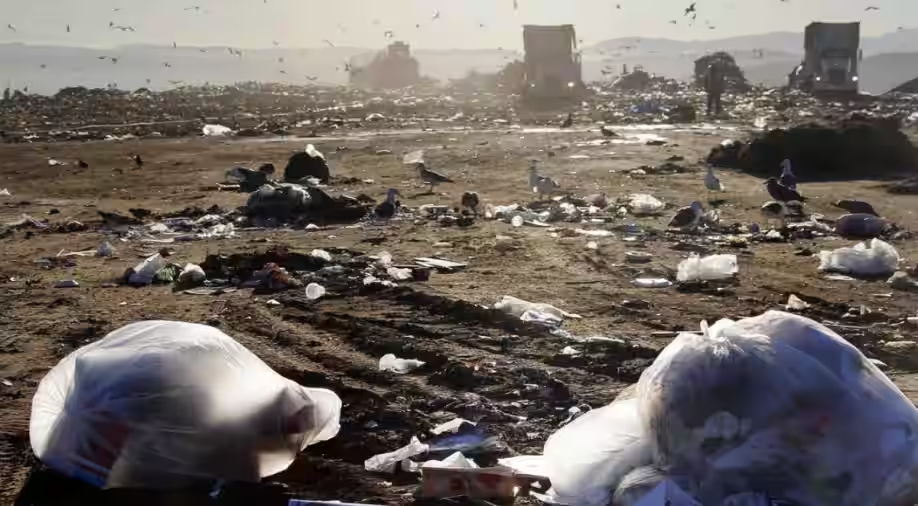
The new technique of disposing diapers without using water can revolutionise the waste management. The researchers focused on special polymers called super-absorbers that handle the absorption of liquid. Photograph:(Twitter)
STORY HIGHLIGHTS
Researchers have found a new way to recycle a key component of the diaper waste using an ultraviolet (UV) light to break down waste materials with just using water.
Waste management is a worldwide problem and waste segregation is even a bigger one. Diaper waste is something that mostly gets overlooked but is a real problem when it comes to proper segregation of waste. As per one estimate, over 300,000 of diapers are disposed off every single minute worldwide. Scientists have now come up with a solution to recycle the key component in diapers.
The innovation is done by the Karlsruhe Institute of Technology (KIT) in Germany and Xi’an Jiaotong University in China. The teams at these universities used ultraviolet (UV) light to break down a key part of the diapers, without any extra chemicals required, just water.
Diaper waste management
The new technique of disposing diapers without using water can revolutionise waste management.
The researchers focused on special polymers called super-absorbers that handle the absorption of liquid. These polymers can be found in other hygiene and medical products too, including bandages.
“The chains that link the polymers are broken by the light,” says Pavel Levkin, a professor of multifunctional materials systems at KIT. “Then, they are so loose that they swim in water and turn into liquid fibres.”
“This method with UV light is about 200 times faster than with acids.”
A 2021 study found that acids can be used to break the polymer chains so that the material itself can be broken down.
However, it is difficult and expensive to do, which is why around two million tonnes of super-absorbers are burned or put on landfills every year.
How does this new process work?
In the newly developed process, after the liners were cut out of the diapers, they were soaked with water and exposed to a 10,000 UV lamp. In few minutes, the material turned into a liquid that could be dropped into a collecting device.
UV light is already well-known for being able to degrade materials. However, the degradation effects and their speed can vary a lot, depending on the material.
In this case, the researchers were inspired by an earlier study into chemical recycling of super-absorbers, using their knowledge of UV light reactions to hypothesise that the recycling process could be sped up significantly.
The super-absorber is only part of a diaper, of course, but this is a step in the right direction when it comes to our plastic pollution issues, and the team is confident that the process can be scaled up with reasonable ease.
(With inputs from agencies)
Repost: Wionews By: Riya Teotia
